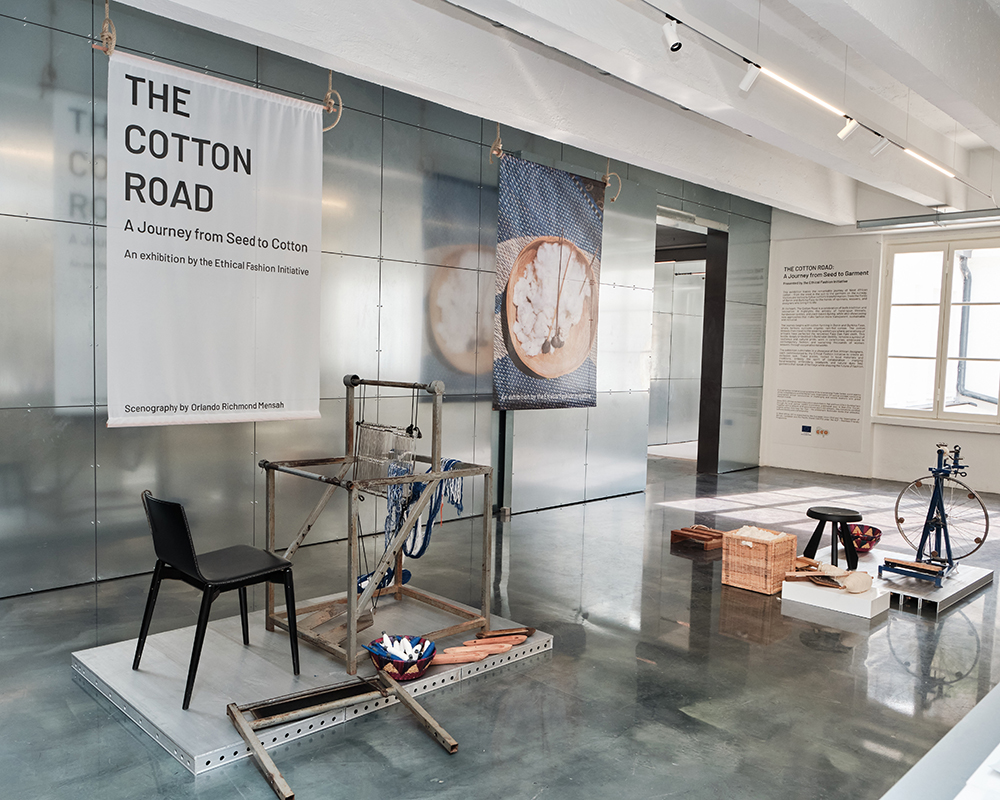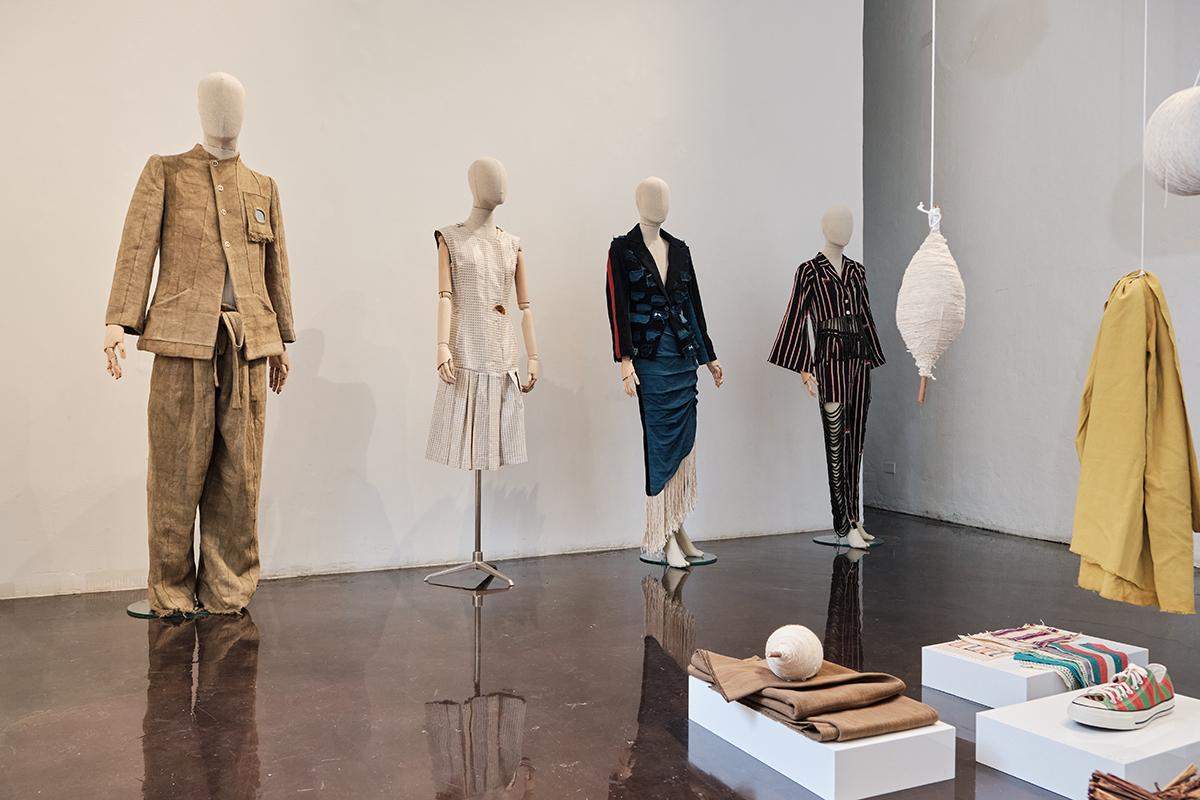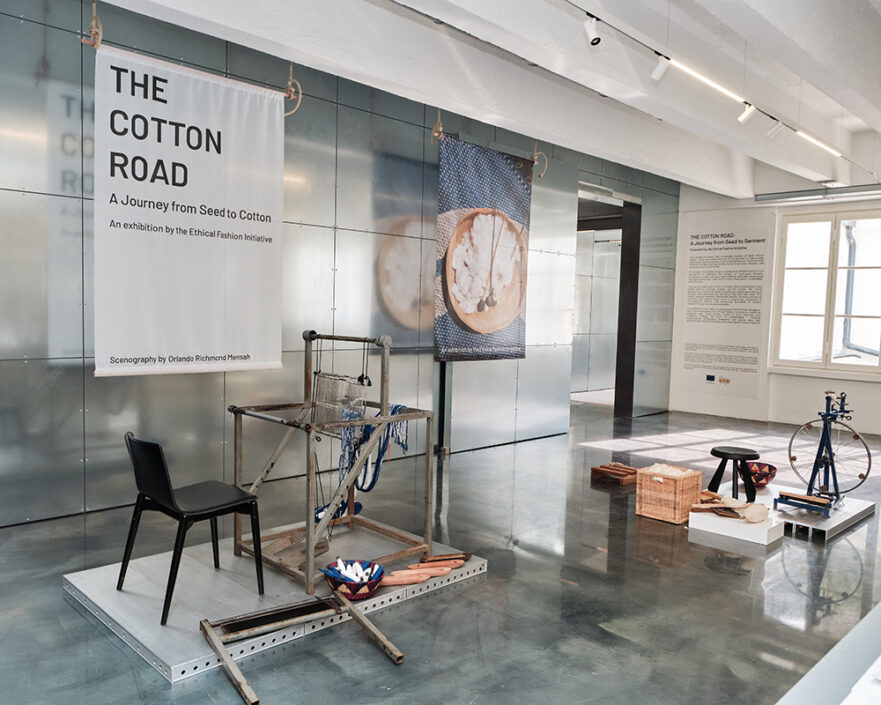Kultúra
The Cotton Road

The Cotton Road: Threads of Memory and Modernity
Words by Teneshia Carr
Images Courtesy of EFI
At Milan Fashion Week, amid the sleek façades of design houses and the echo of cameras, a quieter story unfolded, one that began not in Europe’s ateliers but in the cotton fields of West Africa. The Cotton Road: A Journey from Seed to Garment, presented by the Ethical Fashion Initiative (EFI) in collaboration with 10 Corso Como and Spring Studios, invited visitors to trace the path of cotton from seed to fabric to fashion, illuminating the many hands, histories, and creative visions woven into every fiber.
The event took place from September 25 to 28 at 10 Corso Como, where the exhibition transformed the iconic Milan concept store into an immersive, living archive. Visitors navigated a scenography that mirrored the cotton lifecycle, beginning in the fields of Benin and Burkina Faso, traveling through the looms and dye vats of local artisans, and ultimately arriving in the hands of contemporary designers from across the continent. The result was a spatial narrative that challenged the audience to see cotton not simply as raw material but as a vessel of memory, migration, and meaning.
EFI has been working in West Africa’s cotton value chain since 2012, supporting more than 4,000 artisans and small producers while strengthening sustainable and traceable practices. Backed by the European Union and the OACPS Business Friendly Programme, this initiative has enabled artisans to scale production without compromising their heritage, striking a balance that feels urgent in an industry still dominated by opacity and waste.

Curated under the creative direction of Richmond Orlando Mensah, founder of MANJU Journal, the exhibition was divided between the Project Room and Mezzanine Room of 10 Corso Como. Mensah served as scenographer, transforming both spaces into an experiential narrative that blurred the lines between gallery and garment. “I wanted to create a space that doesn’t just present objects but stages a story," he shared. “Visitors move through the exhibition almost as though they’re moving through cotton’s journey, through labor, craft, and imagination.”
That intention was palpable in the way light, texture, and motion worked together. Walls of handwoven cloth framed video projections of artisans at work; tables of raw cotton spilled into displays of dyed and embroidered textiles. Every detail underscored the idea that materials carry stories, sometimes buried, sometimes whispered, but always present. “My hope," Mensah added, “is that people leave with a deeper awareness of how design and fabric can make those stories tangible.”
The exhibition’s creative core featured five designers selected by EFI to create one-of-a-kind looks rooted in local materials and traditional techniques: Sean Nobayo (Benin), Gaïnga (Burkina Faso), Olooh (Côte d’Ivoire), Numu D (Mali), and Feelinger (Chad). Each designer collaborated with artisanal collectives, such as CABES, Studio 4, and Koyibaton, demonstrating how design can serve as a bridge between tradition and innovation. From plant-based dyes to hand-embroidery and beadwork, these garments redefined “luxury” through the lens of human touch.
Beyond the exhibition, The Cotton Road hosted a public roundtable on September 26, extending the conversation from the gallery into a dialogue. Moderated by me for Časopis Blanc, the panel gathered a constellation of voices, Afropean textile artist Damien Ajavon, Milan designer Edward Buchanan, Michelle Francine Ngonmo of the Afro Fashion Association, and Richmond Orlando Mensah himself, to discuss the future of fashion through visibility, ownership, and cultural storytelling. It wasn’t a conversation about inclusion as a trend; it was about infrastructure, authorship, and the systems that define value.
For Orlando, who has long used MANJU Journal as a platform for archiving and amplifying African creativity, the project resonated deeply. “MANJU has always been about creating space for conversations around African cultural expression and heritage," he explained. “Being part of The Cotton Road allowed me to translate those narratives into a live experience, one that bridges history, materiality, and contemporary design in a way that feels accessible and alive.”
That word—alive—echoed throughout the week. In the hum of a loom, the rhythm of dyed fabric drying in the sun, the subtle imperfections of handmade cloth. The exhibition resisted the static beauty of display; instead, it pulsed with labor and lineage. It was a reminder that every garment, no matter how refined, begins with a seed, a hand, and a choice.
In many ways, The Cotton Road felt like a mirror to fashion’s current crossroads. As the global industry grapples with sustainability, extraction, and cultural ownership, the exhibition offered a model rooted not in guilt but in possibility, a demonstration that transparency can be lyrical, that ethics can be aesthetic.
Walking through 10 Corso Como, one could sense that something was shifting. Milan, long defined by its mastery of finish, was looking inward, to the unfinished, the unacknowledged, the unseen. And in that space between fiber and form, The Cotton Road invited us to consider that the future of fashion might not be about what’s next, but about what and who we choose to remember.

